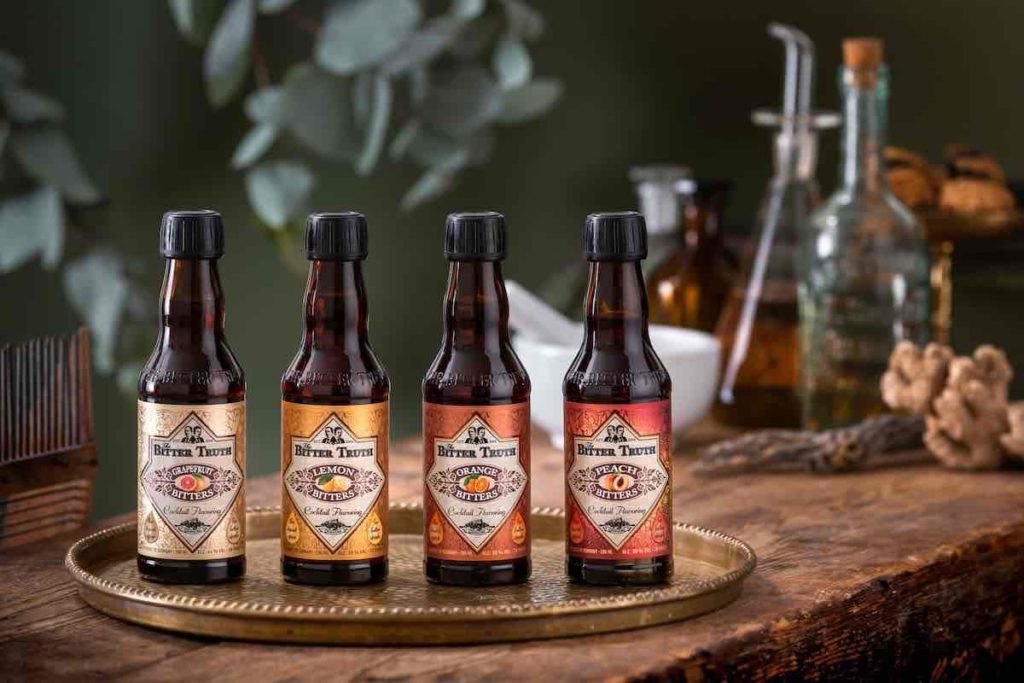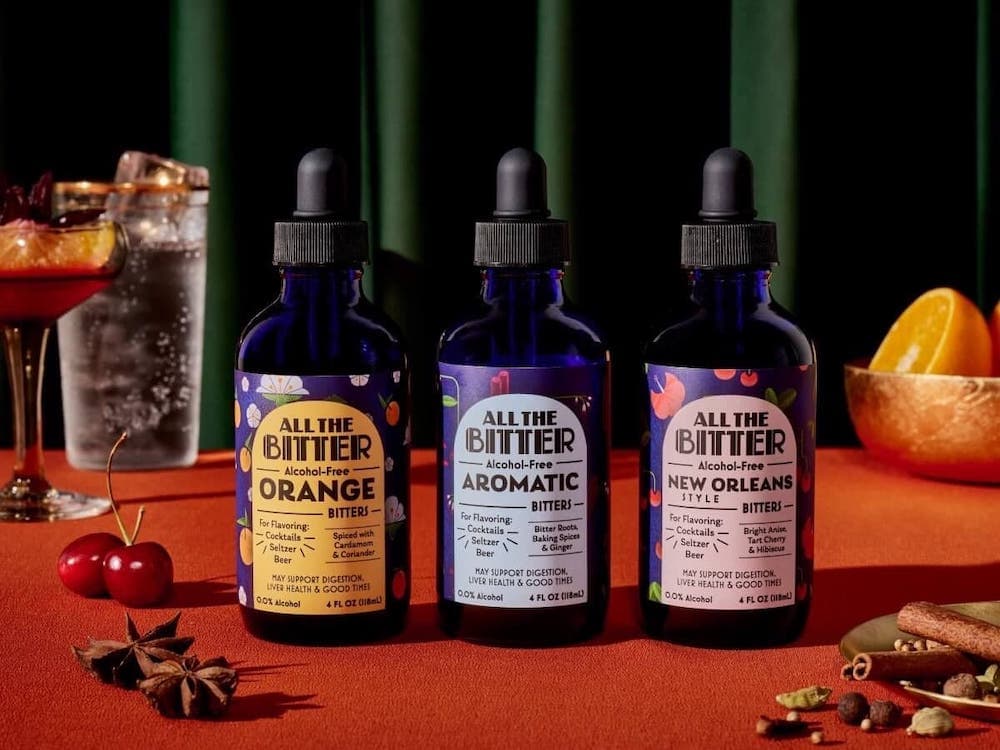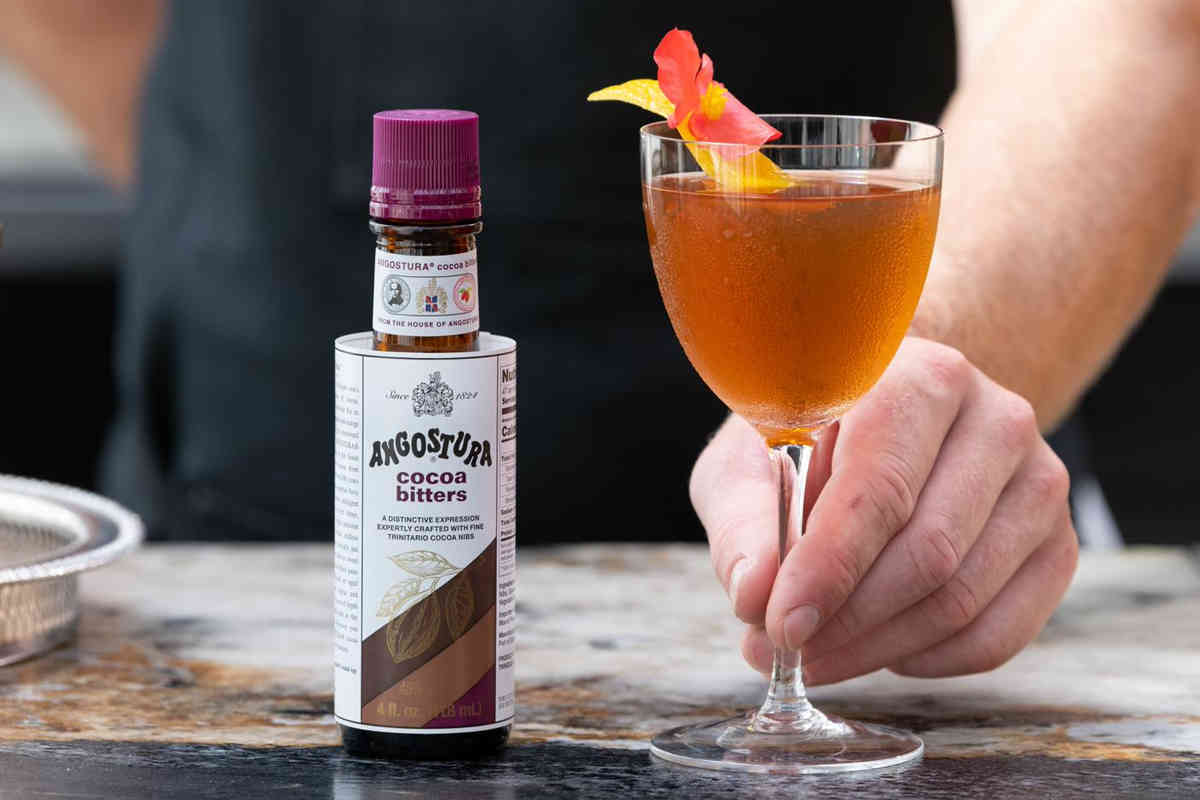Most aromatic cocktail bitters contain alcohol, but just how much? And can you use them in nonalcoholic cocktails? Whether you’re abstaining for Dry January, Sober October, or just because, it’s always helpful to know what you’re ingesting.
A quick internet search reveals the following:
- 1821 Bitters range from 28% to 66% ABV
- Amargo Chuncho bitters from Peru are 40% ABV
- Angostura Bitters are 44.7% ABV, Angostura Orange are 28% ABV, and the cocoa bitters are 48% ABV.
- Bitter Queens range between 30% and 50%
- Bittercube Bitters range from 35% – 51%
- Bittered Sling are 40%
- Bittermens range from 44% – 53%
- Dashfire Bitters range from 34% – 40%
- Fee Brothers Bitters range from 1.3% (for the celery) to 46% (for the lemon) [full list of ABVs here]
- Miracle Mile Bitters are 45% ABV
- Peychaud’s Bitters are 35%
- Regans’ Orange Bitters are 45% ABV
- Scrappy’s Bitters range between 43% – 51%
- The Bitter Truth range between 30% – 44%
Note that Fee Brothers bitters are not nonalcoholic, despite persistent rumors to the contrary. This brand of bitters uses a base of glycerin rather than ethanol, but the flavoring extracts added to the base do contain alcohol.
You may be wondering if bitters contain so much alcohol, how are they sold in stores that don’t sell wine or liquor? At least in the United States, some brands of bitters including Angostura are considered flavoring, rather than a beverage; just like vanilla extract that usually comes in at 35% ABV. They’re considered “non-potable.” Not all brands of bitters are in this category, but the older brands like Angostura, Peychaud’s, and Fee Brothers are.

Using Bitters in Nonalcoholic Cocktails
Legally, nonalcoholic beverages in the US must have less than 0.5% ABV. A few years back, some kombucha beverage makers got into a little trouble as they exceeded the limit, so now some brands dealcoholize their kombuchas to keep them below the legal limit.
A few years ago, I calculated that if you used Angostura bitters in an otherwise nonalcoholic cocktail that was 5 ounces in total volume, you could add two dashes of bitters before you’d cross the .5% ABV limit.
That said, should you really be adding alcoholic bitters to someone’s nonalcoholic cocktail? If I’m making a nonalcoholic cocktail for myself, I’ll absolutely add bitters, and usually more than 2 dashes, too. I know it won’t impact my sobriety; it’s too small an amount. But that’s me serving myself, not me serving someone else.
People have different reasons for not drinking that may be Dry January, pregnancy, workplace etiquette, alcohol use disorder, or religious prohibitions. And a person’s particular reason is none of our business. Though someone probably wouldn’t feel the physical impact of alcohol in their drink from a dash or two of bitters you snuck in, it is not always about physical impact.

A comparison I find helpful is that of bacon—if someone said they were not eating bacon, the reasoning could be because they are full, dieting, are a vegetarian, are Jewish or Muslim, have an allergy, etc. To some people, eating any amount of bacon is too much. No means no.
Luckily, recent years have seen nonalcoholic bitters come onto the market, so you can use these whether you’re serving yourself or someone else.
Three Brands of Nonalcoholic Bitters
I know of three brands of nonalcoholic bitters so far. The earliest on the market were from Dram Apothecary. Most of their products are CBD-based, but not so the bitters. A few years ago I used their Aromatic Hair of the Dog bitters and found them to be a worthy substitution for Angostura.
All the Bitter is a newer line of all nonalcoholic cocktail bitters. They currently offer three varieties: Aromatic, New Orleans, and Orange to substitute for Angostura, Peychaud’s, and whichever orange bitters you prefer.
And finally, El Guapo makes nonalcoholic bitters, along with syrups and mixers. Currently their website lists 12 types in themes like Love Potion and Gumbo Bitters.
A small amount of bitters can have a big flavor impact on a person’s cocktail, and now with nonalcoholic bitters available to use, we don’t have to debate the ethics of adding them to one’s drink.



